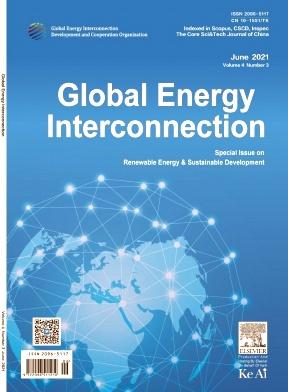Online evaluation method for MMC submodule capacitor aging based on CapAgingNet
IF 2.6
Q4 ENERGY & FUELS
引用次数: 0
Abstract
Submodule capacitor aging poses significant challenges to the safe operation of modular multilevel converter (MMC) systems. Traditional detection methods rely predominantly on offline tests, lacking real-time evaluation capabilities. Moreover, existing online approaches require additional sampling channels, thereby increasing system complexity and costs. To address these issues, this paper proposes an online evaluation method for submodule capacitor aging based on CapAgingNet. Initially, an MMC system simulation platform is developed to examine the effects of submodule capacitor aging on system operational characteristics and to create a dataset of submodule capacitor switching states. Subsequently, the CapAgingNet model is introduced, incorporating key technical modules to enhance performance: the Deep Stem module, which extracts larger receptive fields through multiple convolution layers and mitigates the impact of data sparsity in capacitor aging on feature extraction; the efficient channel attention (ECA) module, utilizing one-dimensional convolution for dynamic weighting to adjust the importance of each channel, thereby enhancing the ability of the model to process high-dimensional features in capacitor aging data; and the multiscale feature fusion (MSF) module, which integrates capacitor aging information across different scales by combining fine-grained and coarse-grained features, thus improving the capacity of the model to capture high-frequency variation characteristics. The experimental results reveal that the CapAgingNet model achieves a TOP-1 accuracy of 95.32 % and a macro-averaged F1 score of 95.49 % on the test set, thereby providing effective technical support for online monitoring of submodule capacitor aging.
基于CapAgingNet的MMC子模块电容老化在线评估方法
子模块电容器老化对模块化多电平变换器(MMC)系统的安全运行提出了重大挑战。传统的检测方法主要依赖于离线测试,缺乏实时评估能力。此外,现有的在线方法需要额外的采样通道,从而增加了系统的复杂性和成本。针对这些问题,本文提出了一种基于CapAgingNet的子模块电容老化在线评估方法。首先,开发了MMC系统仿真平台,研究了子模块电容器老化对系统工作特性的影响,并创建了子模块电容器切换状态的数据集。随后,引入CapAgingNet模型,结合关键技术模块来提高性能:Deep Stem模块,通过多个卷积层提取更大的接收场,减轻电容器老化过程中数据稀疏性对特征提取的影响;高效通道关注(ECA)模块,利用一维卷积动态加权来调整各通道的重要性,从而增强模型处理电容老化数据高维特征的能力;多尺度特征融合(MSF)模块,通过细粒度特征和粗粒度特征相结合,集成不同尺度的电容老化信息,提高模型捕获高频变化特征的能力。实验结果表明,CapAgingNet模型在测试集上的TOP-1准确率为95.32%,宏观平均F1得分为95.49%,为子模块电容老化在线监测提供了有效的技术支持。
本文章由计算机程序翻译,如有差异,请以英文原文为准。
求助全文
约1分钟内获得全文
求助全文
来源期刊

Global Energy Interconnection
Engineering-Automotive Engineering
CiteScore
5.70
自引率
0.00%
发文量
985
审稿时长
15 weeks
 求助内容:
求助内容: 应助结果提醒方式:
应助结果提醒方式:


